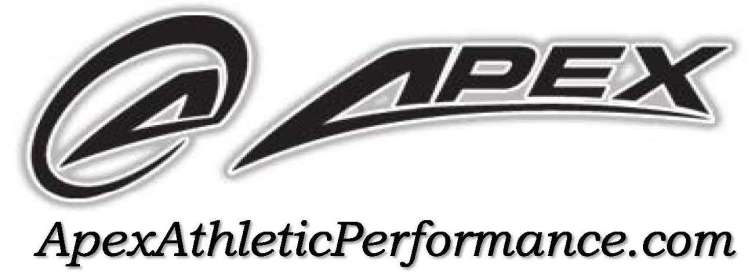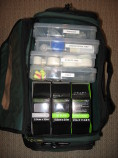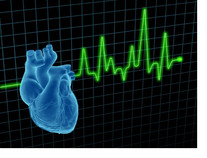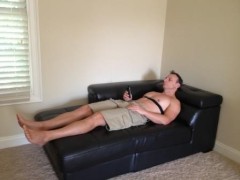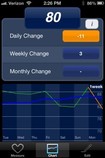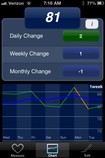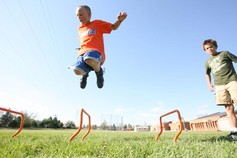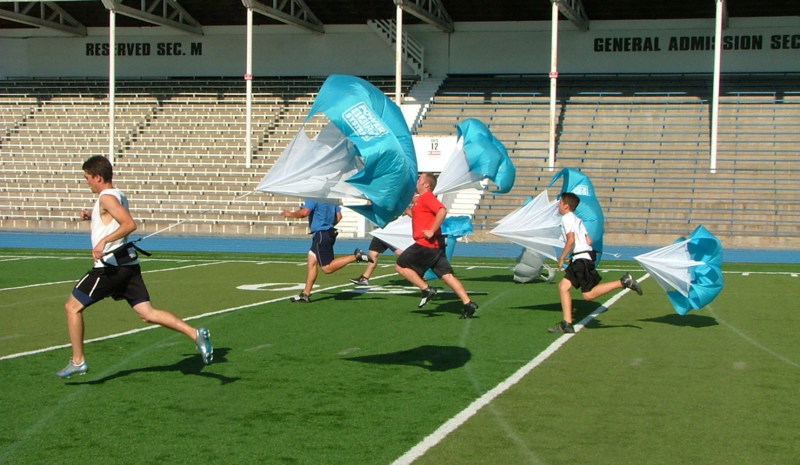
What's in my Kit Bag?
My sideline Athletic Training Kit bag is pretty well sorted.
First up, the front pocket: There you will find my Perform Tex Teflon coated scissors for precisely cutting PerformTex Therapeutic Tape. I also have a scissors for cutting athletic tape and a multi-purpose pocket knife. My tools for IASTM (Instrument Assisted Soft Tissue Mobilization) are also found here.
Left Pocket: PerformTex tape adhesion spray. Gets the area to hold the PerformTex tape strongly.
Bottom Level Left (Not Shown): A box filled with additional topical creams, primarily anti-inflammatory types. Also, a CPR mask (Although they keep changing the rules now and they are teaching only compressions). "Sudz" spray to clean debris out of wounds, which comes in handy at bike races with road rash.
Mid Level Left (Not Shown): A box filled with spare athletic tape, pre-wrap, gauze and all shapes of band-aids.
Top Level from Left to Right, or top to bottom as shown:
Large PerformTex Rolls in Titanium, Jet Black and Speed Green Colors. Therapeutic tape is a must have if you work with any athletes.
Parts Bin labeled "Tools" which carries a hair trimmer to prep an area for taping, a pen, notepad, ear plugs, a tooth saver kit (handy for hockey and rugby), more speciality scissors, lip balm
Next, the Parts Bin labeled "Athletic Tape": White compressive Athletic tape in all stages of size.
The Bin labled "Sprays and topical prep" have more PerformTex sprays for prepping an area for taping, removing tape, more embrocations for muscle warm up, Spray and Stretch sprays, BioFreeze Rollers, oil for skin prep for IASTM, etc.
The last Parts Bin is labeled "BioFreeze" and its stocked full of single use BioFreeze packets, either to use or hand out.
The Right Pocket has a tack hammer with cling wrap wrapped thickly around the handle. You never know when you will need a hammer, and the cling wrap is used to hold ice bags in place on the body, so the athlete does not need to sit there and get a cold hand holding the pack in place. My large handled Cling Wrap Dispensor did not fit in the bag unless I remove other items. Easier to have a smaller supply and just re-stock as necessary.
The far right pocket has surgical gloves. It can get messy out there.
Heart Rate Variability and why you should know about it!
Great article from the Vertical Jumping Website:
(Verticaljumping.com)
When it comes to athletic training each person IS different. Here is a list of just some of the things outside of the actual training program that can, and indeed do impact how much an athlete improves:
- Age
- Gender
- Body type
- Genetics
- Training history
- Diet
- Sleep habits
- Life stress (exams, job, relationship, money etc)
- Other sporting commitments (games, training, other sports)
- Climate they live in
- Lifestyle choices (smoking, drinking, drugs etc)
Would you train these two athletes the same?
Sometimes the need for a custom training plan is rather obvious.
As many of you know my belief about ANY form of training is that from an actual programming point of view having a customized workout based on the individuals needs as they relate to a specific goal is the fastest way to get results. This isn't a great revelation by the way, most good coaches and trainers would agree with this view. But even with a custom training program there are still all those other outside factors at play. The question this raises is how then do you account for them in building and designing workouts?
This is where Heart Rate Variability (HRV) training comes in! What exactly is HRV? In really simple terms HRV is the variability in the time between our heart beats. If there is a high level of variability in those times it essentially means that the parasympathetic nervous system is more active. If the variability is low it means that the sympathetic nervous system is more active.
What is the difference between the two? Well the sympathetic nervous system is the one that kicks into gear to creates a response when you introduce a stress into your life (such as a training session or a big night out on the town). The parasympathetic system works to negate those stressors.
Accordingly a low HRV score indicates that you are in a state of being stressed by something (workout, life, illness etc), while a higher HRV reading indicates we are feeling pretty good and can take on some more challenging tasks (in the form of harder, more intense workouts).
So now that we know the basics of what HRV is let's go back and take another look at those variables outside of a the program and see if we can find a use for HRV in our training. If you think bigger picture you will notice that all of the things I listed earlier share one thing in common. Age, gender, training experience, diet, genetics, lifestyle - all of these are factors that impact how quickly our nervous system can recover from the stresses in our lives.
Why is this important? Well for any athlete (and power athletes in particular), the central nervous system is the key to optimal performance. If you have been performing heavy squats or a high volume of depth jumps every day, the chances are your CNS will struggle to keep up with the demands you are placing on your body. When this happens athletes get sick, they get injured, they lose motivation, and their results can stagnate or worse, go backwards.
However imagine if you could quickly and easily measure how well your CNS had recovered and adjust your training accordingly. Well guess what, you can!
This is exactly what HRV based training is. Sticking with the simple terms, HRV training is the process of adjusting your training volume, intensity, load, etc based on your daily HRV score (i.e. The state of your CNS activity. Either it is in a stressed - sympathetic state, or a recovered - parasympathetic state).
So how does HRV training work? Well like everything else these days, it can be done using a smart phone app. You also need a typical heart rate monitor and a wireless HRV receiver to plug into your smart phone but these aren't hard to come by nor are they particularly expensive.
HRV training is essentially a 3 step process.
Step 1: Wake up, and take your HRV reading. It takes less than 5 minutes. Total.
Step 2: Depending on your HRV reading you adjust your training volume and intensity up or down.
Step 3: Get great results while minimizing time wasted through over OR under training.
It really is that simple.
Practical Application of Heart Rate Variability Training
I have been using a BioForce HRV kit since late March. Not only have I regularly set new strength PR's in my training, but since the middle of May I have also managed to lose 20 pounds in weight through regular sprint training and calorie restrictive dietary changes (both known CNS stressors), as well as a more conscientious approach to sleep. In that time I have not had a single injury, nor have I been sick, in fact, it wouldn't be a stretch to say I have not felt this energetic and healthy in a long time.
Now granted, there will be a certain amount of this health and well-being attributable to the warm weather, healthier eating, and better sleep habits, but the real difference maker I feel has been the way I have catered my daily training loads based on my daily HRV readings.
Let me show you an actual example of how I have been using HRV training in practice. Below is a screen shot from my HRV readings over the past week. As you can I have been green for the past few days meaning I was recovering well from my workouts and life hasn't been too stressful.
If you look at yesterday's reading however it dropped 11 points and was now in the orange. Now the HRV score could have dropped for a number of reasons including new training stimulus (I upped the weight of my KB swings from 70lb to 100lb), broken sleep, or maybe I just had a major freak out about Game of Thrones.
In the long term it is a great idea to track the things in your life that could potentially be causing stress to your nervous system so that you can learn how your body responds and adjust your behaviour accordingly, but in the immediate term it doesn't actually matter too much what has caused the drop. What does matters is that I needed to make a decision about how to train yesterday.
My original scheduled workout was another session in the gym but as it was still early in the training week I put that weights workout on hold and instead shot some baskets at the YMCA for 30 minutes, performed some low volume band resisted sprints for 10-15 minutes, and finished with 10 minutes of weighted core work.
The result of taking an easier day yesterday has my HRV back up a few points and into the green zone. Knowing I am now more ready to train allows me to head back into the gym and attack the weights again with confidence.
As you can see you still need to exercise a degree of judgement with HRV training. If for example it was a Friday and I knew I was having Saturday and Sunday off, I might've still gone ahead with my weight's session knowing a few days of rest were forthcoming. If I was still green but my glutes and hamstrings were really sore from the heavy swings I might also have modified my workout to account for that as well. The HRV score is a representation of the state of your CNS, not muscle fatigue and soreness.
Another modification I could've made yesterday if my HRV was still green would've been to INCREASE the workload. A week of successive green HRV readings indicates that I am probably not training hard enough and have capacity to do more. HRV training isn't only about knowing when to back off, it is also about knowing when to ramp up.
One other thing you might have noticed about my two HRV readings is that there is only a small difference in the actual scores yet one is Amber and the other is Green. The reason for this is the that the BioForce system has recognized that Tuesday represented an 11 point drop off while today was a stabilization and slight increase. What this means is that while the HRV score itself is an absolute figure (fitter athletes tend to have higher HRV scores), the Red, Green, and Amber ratings that the system provides are based on other factors including average HRV scores of the user and changes either up or down in the scores.
The way that HRV training allows you to quickly adjust your training load either up or down can be a very effective tool in order to both help minimize fatigue and injury, and optimize training loads and volumes to match YOUR ability to recover. The best results always come from having your training program customized to suit you, and if you are looking to take your training to another level, HRV is simple and effective way to help achieve that.
A great article on how to develop the student athlete. It just re-affirms that what we do here at Apex, working on the athletic fundamentals and drilling on great form, is paramount when working with student-athletes.
Read the article here.
Minimalist Shoes- Are they right for you?
by Martin Redmann
"Like all recreational runners who start to think about adding distance, I was looking for the magic bullet that would keep my knees from hurting after longer runs. After my first 13 mile run in 2009, I was in so much pain that I thought I’d have to give up my goal of finishing a marathon. At that time, Christopher McDougall’s book "Born to Run" was hot off the press and I read a review of the book in Triathlete magazine. I picked up a copy the next day and read it cover to cover. Born to Run was the first step in my journey to minimalist shoes and a forefoot-strike running technique. The book examined the Tarahumara tribe of Indians in Mexico who regularly ran long distances in mountainous terrain wearing only leather sandals or pieces of tire tread laced to their feet. Despite the primitive nature of their shoes, they were injury free and fast.
Research has found that the less you wear on your feet, the lower the chance of injury. In the 1970’s, the US economy was awful and more Americans were looking for cheap forms of exercise. Marathon running became popular because of books like The Complete Book of Running by Jim Fixx. Fixx and others created a movement populated by non-runners who wanted to run 26.2 miles.Tens of thousands of new runners pushed shoe companies to design running shoes for the untrained and injury prone runner. These companies created cushioned soles, dense heel padding, and “pillowy” insoles. All of the padding made it comfortable for runners to strike with their heels, forcing all of the weight and stress to travel straight up the leg into the knees and hips, which led to more injuries…and more padding until running shoes were so over designed that they no longer allowed the foot to react and work as it was designed.
Weak feet lead to poor running style, and the cycle just continues. While reading Born to Run, I was convinced that the data from current research were convincing enough to make me change everything that I had long held as running gospel. I needed to wear less on my feet and move my landing (striking) point forward to my mid-foot, with my ultimate goal to be a forefoot striker. I found a local store that sold Vibram Five Fingers, a shoe that has almost no sole and that fits like a glove…literally…it looks like a glove for your feet!
The idea of a minimalist shoe is simple. Our physiology is such that our legs work like shock absorbers on cars. We bend our knees and ankles to absorb stress to our legs rather than remaining rigid. Picture jumping from your dining room table to the floor. You wouldn’t land on your heels because that would hurt and likely cause injury. Instead, you would land on the balls of your feet, bend at the knees and the hips and reduced the stress to your entire body. My first run in the Five Fingers made it very clear that I had been running with form that was contrary to the way we’re designed to work.
Here’s the best advice I can give you for your first run in a minimalist shoes…go shorter than you think you should! My short runs before switching techniques was a bit longer than 8 miles. My goal was 3 miles in my Five Fingers, but I felt so good at the turn around point that I decided to keep going. At the 2 ½ mile mark, I heading back home and was fresh and fast. I had avoided landing on my heels because the lack of a thick sole and heel reminded me immediately if my form fell apart. The next morning I could barely get out of bed.
Landing forward on my foot had recruited different muscles; muscles that I had never used during runs while wearing pillows on my feet. I was sold and it was time to look for a shoe to replace my Asics. There were very few minimalist shoes on the market in 2009 and I when I looked at the Nike Free there was something that didn’t click for me. A newcomer to the running shoe market, Newton Running caught my eye, and although I had never heard of them they sounded like the right shoe for me. I ordered a pair and within a week of switching shoes, I was back to my normal mileage and beyond. That was ten pairs ago and I haven’t looked back. Switching to a minimalist running shoe has made a world of difference in my life. That’s a bold statement, but it’s true. The knee pain I felt after only 13 miles is a distance memory. I’ve logged more than 5,000 miles since changing my technique and shoes, and I have not missed one day of training due to injury or soreness. Rather than hobbling around after marathons, I‘ve felt fresh immediately after races and the days that followed.Conventional wisdom led to knee injuries, frustration and undoubtedly countless “former” runners who became tired of feeling crappy after a run. For me, minimalist shoes have been the fountain of youth that has kept me pain free and running."
- thanks to Martin Redmann for the write up!
Concordia Football Off Season Training P[...]
Adobe Acrobat document [46.2 MB]
